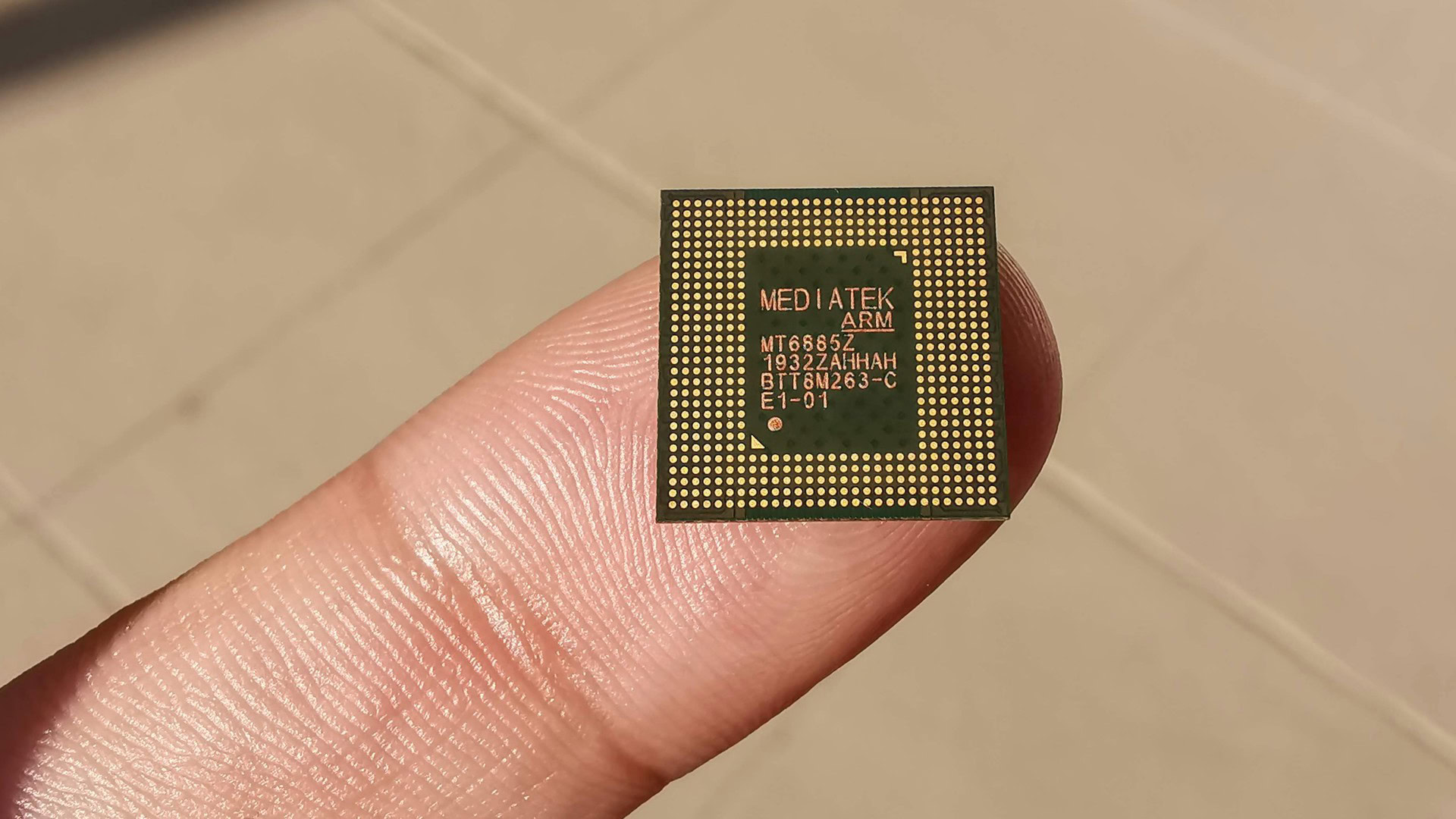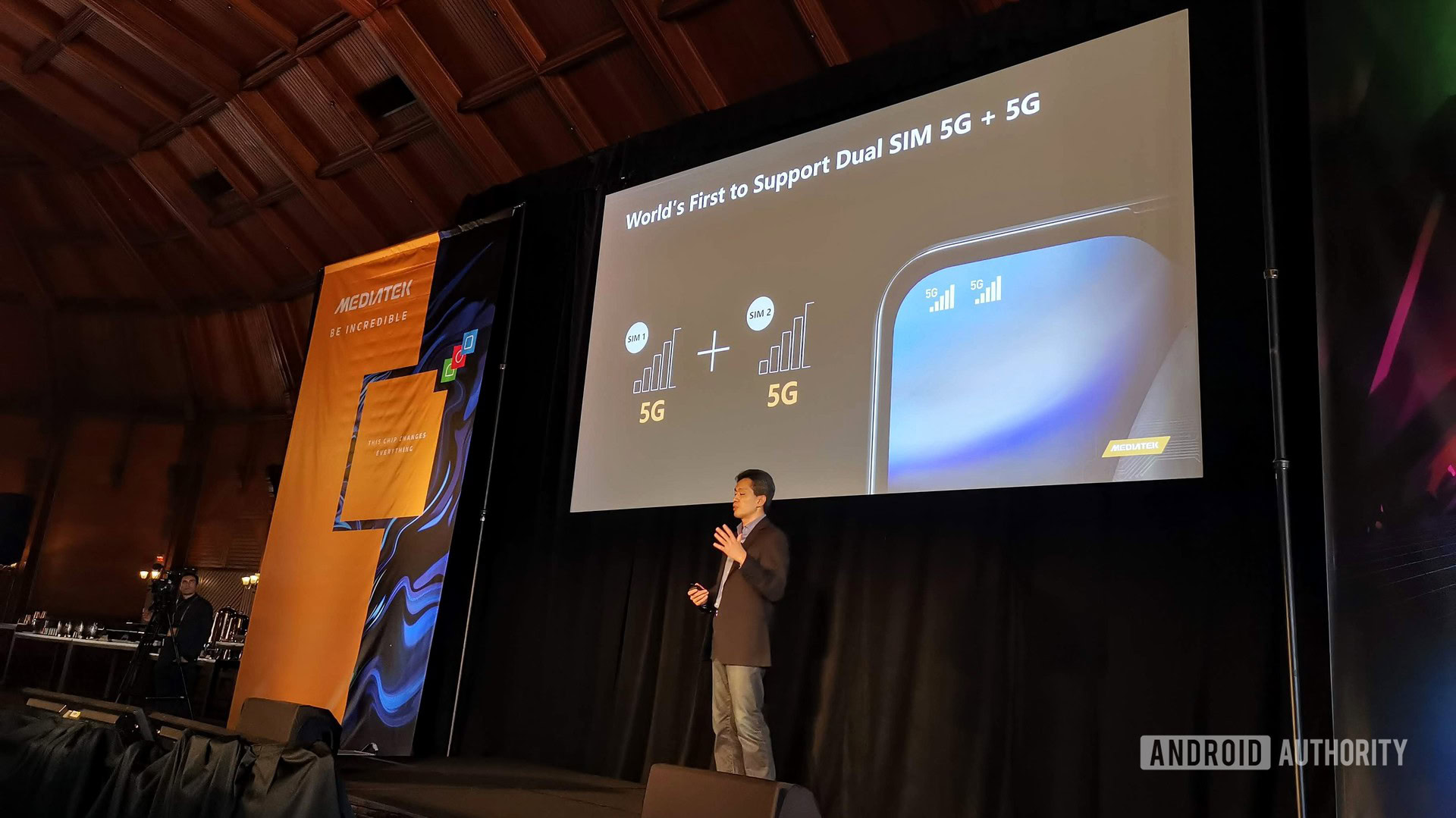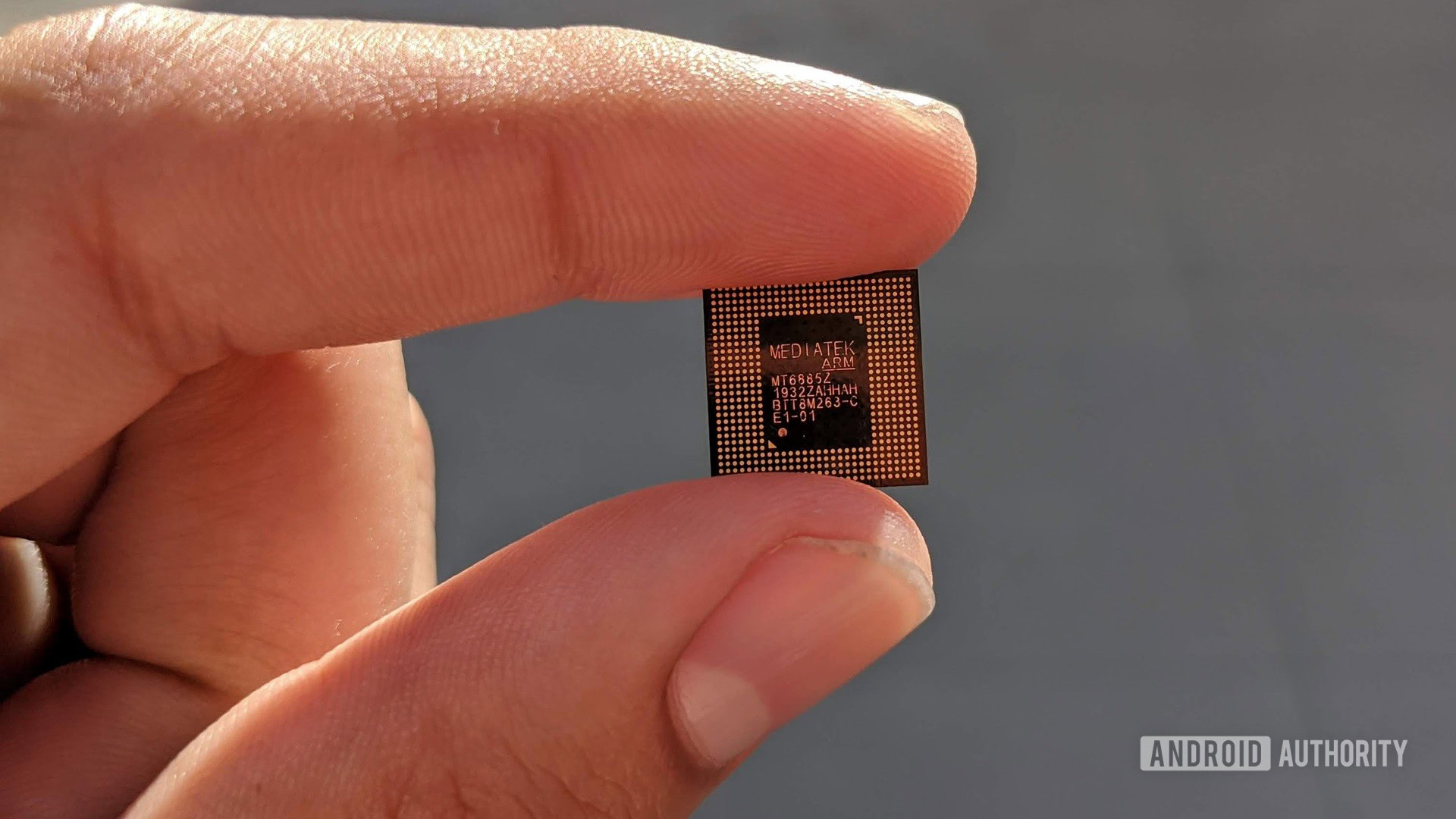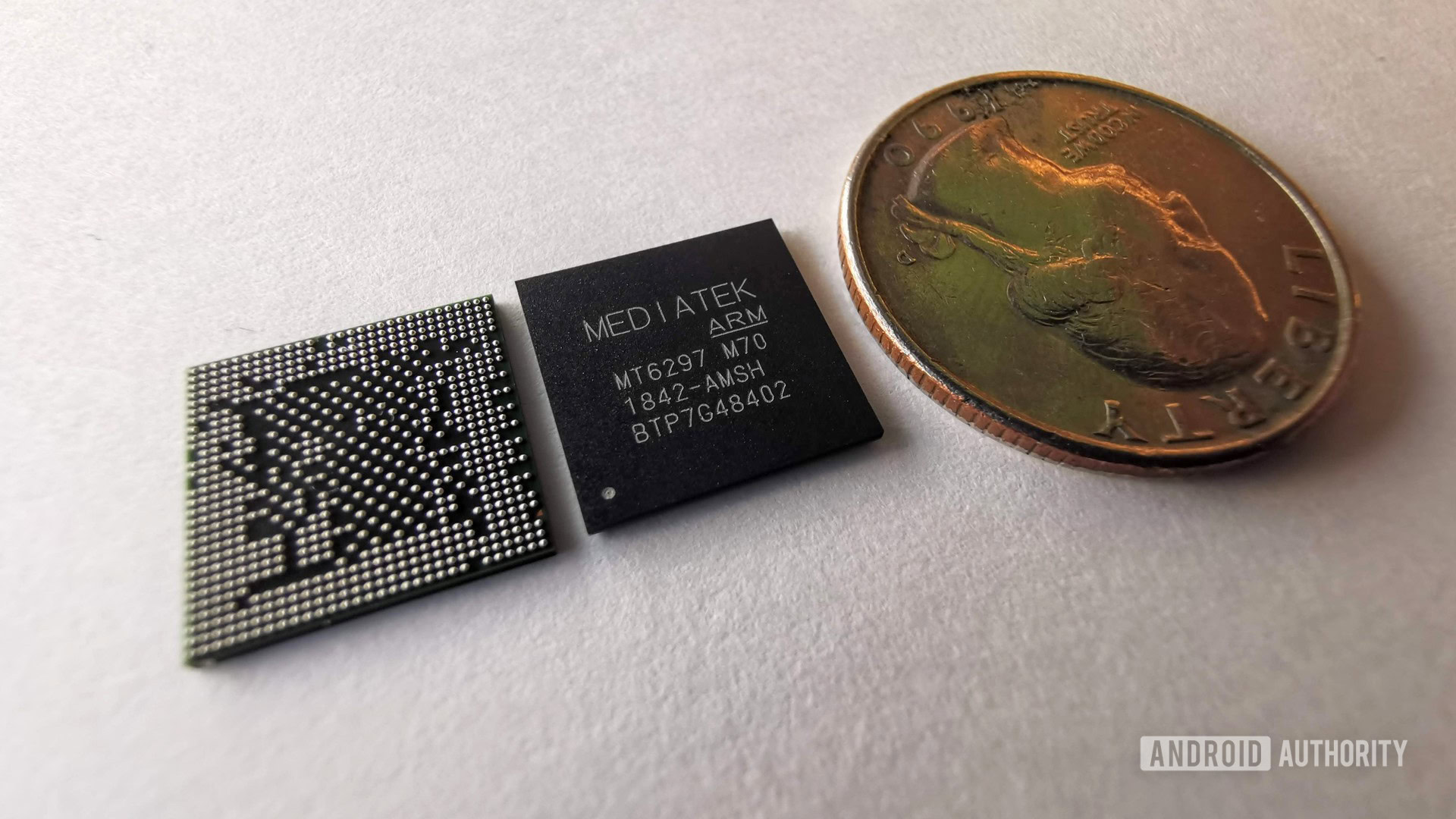Affiliate links on Android Authority may earn us a commission. Learn more.
Qualcomm has flagship competition: MediaTek Dimensity 1000 5G chipset announced
November 26, 2019

MediaTek announced its first 5G processor (MT6885Z) earlier this year. We later learned it used Arm’s latest CPU and GPU technology and offered an integrated 5G modem. Now, the Taiwanese chip designer has fully detailed its new chipset, giving it a name, too.
The 7nm MediaTek Dimensity 1000 5G processor delivers an octa-core CPU layout, divided into four of the latest Cortex-A77 cores and four Cortex-A55 cores for power saving. This layout choice is curious, as rivals Huawei, Samsung, and Qualcomm have all adopted the triple power domain CPU arrangement, reminiscent of MediaTek’s tri-cluster CPU design in the first place.
| MediaTek Dimensity 1000 | |
|---|---|
CPU | 4x Cortex-A77 @ 2.6GHz 4x Cortex-A55 @ 2.2GHz |
GPU | Arm Mali-G77 MP9 |
RAM | LPDDR4x (up to 16GB) |
Modem | Helio M70 5G 4.7Gbps download, 2.5Gbps upload 3GPP Release 15 |
Process | 7nm |
The new chipset also packs a Mali-G77 MP9 GPU, which should theoretically deliver high-end gaming performance. MediaTek is using slightly fewer GPU cores than Samsung’s recently announced Exynos 990 (using a Mali-G77 MP11 GPU), suggesting Samsung might have the gaming edge if all other factors are equal. However, we’ll need to wait for benchmarks to find out if this is the case.
A big AI and 5G push

The Dimensity 1000 is also packing a five-core APU, and the company says it offers 4.5 TOPs of performance (Qualcomm claims seven TOPs for its Snapdragon 855). This APU is divided into two heavy cores, three medium cores, and one lightweight core. MediaTek told journalists that the APU can more efficiently handle machine learning tasks as a result of this arrangement. For example, face detection might only require the lightweight core, while image segmentation and other camera-related tasks might only fire up the heavy cores.
It wouldn’t be a 5G chipset without talking about the integrated Helio M70 modem, and it’s a capable piece of kit. The Dimensity 1000 processor delivers sub-6GHz 5G connectivity (no mmWave here just yet), standalone and non-standalone support, downlink speeds of up to 4.7Gbps, and uplink speeds of up to 2.5Gbps.
In a rather interesting turn of events, MediaTek claims the processor is the first to support dual-SIM 5G connectivity. This means you can have two 5G networks on one device, as opposed to a 4G network and a 5G network. Dual 5G SIM support seems handy in these early days of 5G deployments, allowing users to switch to another network when 5G coverage on one network is weak or non-existent.
The company spent a lot of time comparing its 5G solution to the Snapdragon 855 and the X50 modem. It claims that the Dimensity 1000 chipset and Helio M70 modem pairing delivers twice the speed of Qualcomm’s pairing, and 30% “wider” 5G capacity coverage. MediaTek also says its solution uses 42% less power than Qualcomm’s offering.
We’ll need to wait for the Snapdragon 865 and Qualcomm’s early 2020 5G modem for a better comparison. After all, the Snapdragon 855 and X50 modem first landed in phones in early 2019, while the MediaTek 5G chipset isn’t actually available in phones yet.
What else should you know about Dimensity 1000?

The MediaTek Dimensity 1000 is looking pretty capable in the imaging field too, packing a five-core image signal processor. The silicon supports single cameras up to 80MP/24fps, as well as 32MP/16MP dual camera configurations.
A company representative told Android Authority that the processor also supports up to five cameras. Unfortunately, MediaTek also said that it didn’t support 108MP cameras, so don’t expect anything like a Mi Note 10 successor to run this chipset. Nevertheless, other camera-related capabilities include multi-frame video HDR, AI noise reduction, and 4K/60fps recording (don’t expect 8K just yet).

Other SoC details include Wi-Fi 6 support, AV1 codec support, Bluetooth 5.1, support for QHD+ screens at 90Hz, and FHD+ screens at 120Hz.
MediaTek confirmed that the first phones powered by this chipset will appear “later in 2019” and in the first quarter of 2020. Furthermore, the company said US and European users can expect the first phones with this chipset in the second half of 2020.
This isn’t the only 5G chipset set for 2020, as MediaTek revealed that it was indeed working on mid-range 5G chips for next year. And with Qualcomm bringing 5G to its cheaper silicon as well, it looks like 5G is going to be more affordable across the board.